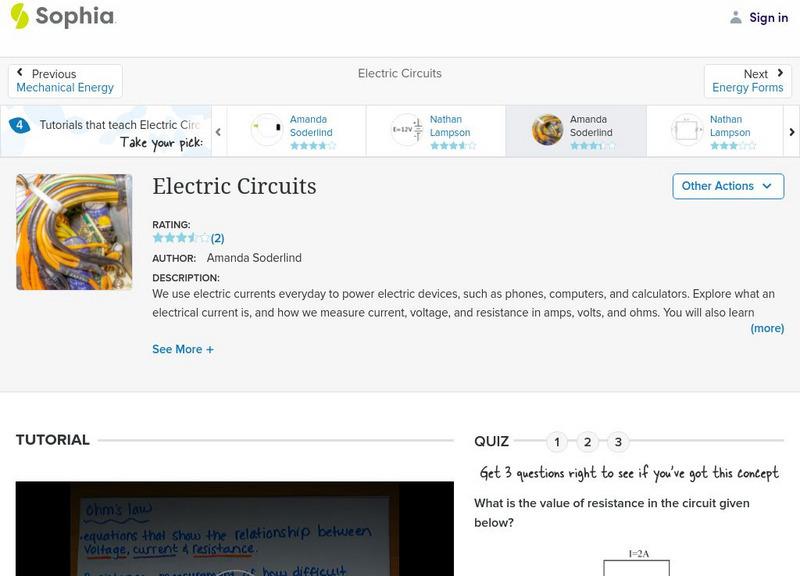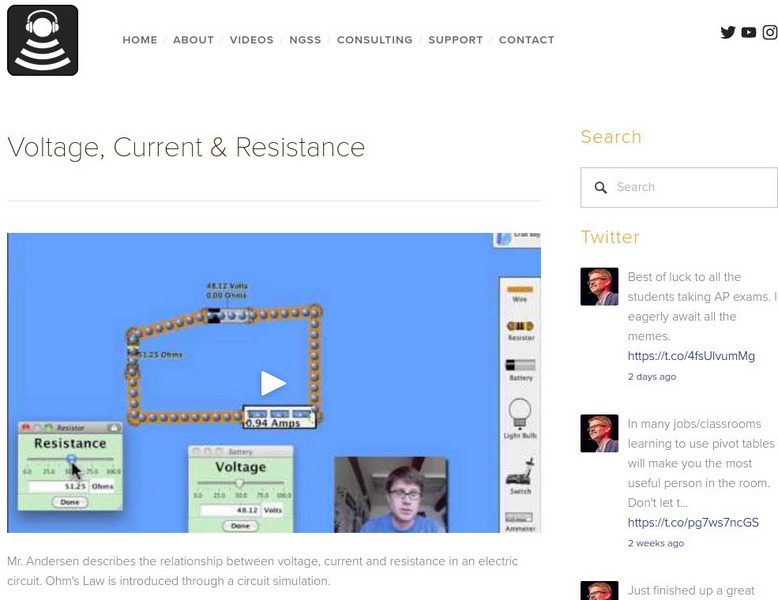Bozeman Science
Resistors and Capacitors
In this video Paul Andersen explains how resistors and capacitors affect circuits. The resistance of a resistor is affected by the resistivity of the material and the geometry of the resistor. The current through a resistor can be...
TED-Ed
TED-Ed: Why a sausage can do what your gloves cannot | Charles Wallace and Sajan Saini
In 2010, South Korea experienced a particularly cold winter. People couldn't activate their smartphones while wearing gloves, so they began wielding snack sausages— causing one company to see a 40% rise in sausage sales. So, what could...
Bozeman Science
Electricity and Electric Circuits
Mr. Andersen introduces the topic of electricity. He differentiates between static electricity and current electricity. An introduction to electric circuits is also included.
Bozeman Science
Electric Circuits
In this video Paul Andersen explains how electric circuits contain different elements which can be connected in series or in parallel. The following four elements are explained in detail; emf, resistor, capacitor, and switch. The voltage...
Flipping Physics
Ammeter and Voltmeter - Where Do They Go?
Good morning! Join us on Flipping Physics as we delve into the critical aspects of measuring current and electric potential difference using ammeters and voltmeters. Discover the correct placement of ammeters and why they belong in...
Curated Video
Simple LED circuit - basic electronics
How to design a simple LED circuit. Which resistor to use, How to calculate the resistor.
Curated Video
Multi-LED circuit design - LED Parallel Circuits
Multi-LED circuit. How to design a circuit which uses multiple LED's or multi-colored LED's. We learn the basics in this video with full calculations to design electronic circuits.
Mazz Media
Electricity
Electricity makes our lives easier every day. We use electricity in our work and play. Because electricity is virtually unseen, it is often difficult to understand just where it comes from and how it works. By watching the video and...
Flipping Physics
Series and Parallel Circuits - Review for AP Physics C: Electricity and Magnetism
AP Physics C: Electricity and Magnetism review of series and parallel circuits including: derivations of equations for resistors in series, resistors in parallel, capacitors in parallel, and capacitors in series, and where to place...
Programming Electronics Academy
Current : Base Electronics: 4
A discussion of electrical current, and how to understand it.
Curated Video
Batteries: Powering Devices with Chemical Energy
Batteries store chemical energy that can be converted into electricity, providing a source of power. By connecting a battery to a circuit, a chemical reaction takes place, causing a buildup of electrons at the anode and creating an...
msvgo
Switches, Conductors and Insulators
This nugget explains about the conductors and insulators and activity on identification of conductors and insulators.
msvgo
Comparison of Physical Properties of Metals and Non-Metals
It explains the physical properties of metals and non-metals.
Visual Learning Systems
Understanding Electric Circuits
In this video, the teacher explains the concept of an electric circuit using a simple light bulb example. The video also highlights the importance of wires and a switch in controlling the flow of electricity. This video is part of the...
Visual Learning Systems
Introduction to Electric Circuits
In this video, we learn about electric circuits and their components. This video is part of the 8-part series, Electrical Circuits.
PBS
Pbs Learning Media: Experimenting With a Lemon Battery
Can a fresh lemon power a digital clock? In this video segment adapted from ZOOM, the cast shows you how this can be done and, in the process, discover how kids can be a part of an electric circuit. [5:05]
PBS
Pbs Learning Media: Exploring Conductivity: Kid Circuits
In this video segment adapted from ZOOM, cast members join hands and become electron conductors to complete an electric circuit. [3:32]
PBS
Pbs Kids: Animations: How Does a Fuse Work?
Narrated animation visually explains how a fuse protects a circuit. (30 secs)
Khan Academy
Khan Academy: Bit Zee Bot: 25, Bit Zee's Bumper Switches
In this video we create and wire Bit-zee's bumper switches for a Bit-zee Bot. [9:48]
Sophia Learning
Sophia: Electric Circuits: Lesson 1
This lesson will explain how to calculate voltage, current, and resistance in simple electric circuits. It is 1 of 4 in the series titled "Electric Circuits."
Bozeman Science
Bozeman Science: Electricity & Electric Circuits
Mr. Andersen introduces the topic of electricity. He differentiates between static electricity and current electricity. An introduction to electric circuits is also included.
Bozeman Science
Bozeman Science: Voltage, Current & Resistance
Mr. Andersen describes the relationship between voltage, current and resistance in an electric circuit. Ohm's Law is introduced through a circuit simulation.






